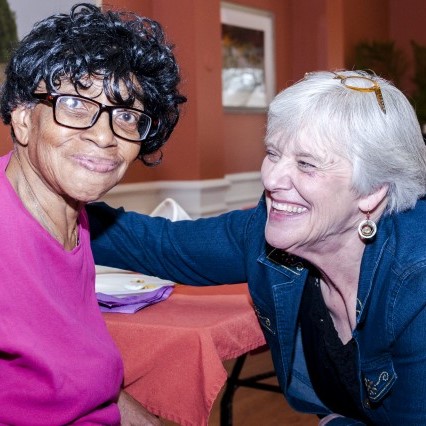Teach a Course
Service-learning is both a pedagogical approach and a form of experiential learning in which students collaborate on projects with community organizations, schools, businesses, and governmental agencies to meet community-identified needs. Through service-learning, students achieve learning goals, co-create knowledge, and become engaged citizens.

Syllabus Template
Learn More
Learning Contract
Learn More
Online Modules
Learn More
Purdue LibGuide
Learn MoreDesigning Service-Learning Courses: Mapping Your Curriculum
When designing a service-learning course, ensure that your course content and service-learning experience reinforce one another by mapping out the following components of your curriculum:
Learning Outcomes and Objectives: Learning outcomes are course-level goals that are met through learning objectives, which scaffold student learning. Aim to have 3-5 measurable learning outcomes by combining an action verb appropriate for the course level (e.g., describe, demonstrate, design) with a learning statement. Connect your learning outcomes to the service-learning experience by focusing on the civic knowledge, skills, attitudes, and behaviors needed to make a difference in community quality of life.
Activities: Service-learning activities teach and invite demonstration of learning outcomes. They may take place in-person, online (i.e., E-Service-Learning), or both. Regardless, activities should be clear, laid out in a developmental sequence, interconnected, and at least some should require reflection. Most importantly, remember that community needs must come first and flexibility is essential.
Assessment: Assessments are used to measure student achievement of course learning outcomes, as well as evaluate service-learning partnerships. They allow students to check their own understanding; instructors to catch misconceptions and track change in student learning; and partners to share their perceptions of the experience, including evaluations of students’ performance and final products. Different types of assessments can be used including class discussions, journal entries, role-playing exercises, and digital storytelling, among others.
Critical Reflection: As a key component of service-learning pedagogy, critical reflection involves asking students to carefully consider their knowledge and beliefs in the context of course content, social issues, and their service-learning experiences. It bridges classroom content and service-learning activities to help students make meaning and avoid applying generalizations or simplistic solutions to community needs. Reflective activities may also function as assessments. Examples include class discussions or presentations, written essays, role-playing, or storytelling. For best practice, student reflection should occur continuously throughout the course in a low to high stakes manner.

Dr. susan modlin
Dr. Modlin teaches NURS 415: Public Health Nursing at Purdue West Lafayette. One of her course learning outcomes is, “To explore the delivery of public health nursing services to diverse and vulnerable populations.” This context and associated service-learning projects provide an opportunity for nursing students to develop empathy and increase their understanding of diversity and inclusion in the context of nursing.

Dr. Andrea DeMaria
Dr. DeMaria teaches PUBH 606: Design & Analysis of Public Health Interventions at Purdue West Lafayette. Throughout her course, students work with community partners to design programs or interventions to improve upon a public health problem. All projects culminate in a white paper for the community partner that details the intervention, its evidence base, and an evaluation of the intervention’s process and outcomes.

Dr. Jeralyn faris
Dr. Faris teaches COM 320: Small Group Communication at Purdue West Lafayette. For a reflective activity to generate thought and discussion, Dr. Faris asks students to complete a pre-class reading and worksheet. Then in class, students are asked to move to the corner of the classroom that most reflects their opinion as it relates to the worksheet questions. Following a class discussion, students revise their initial positions and resubmit.